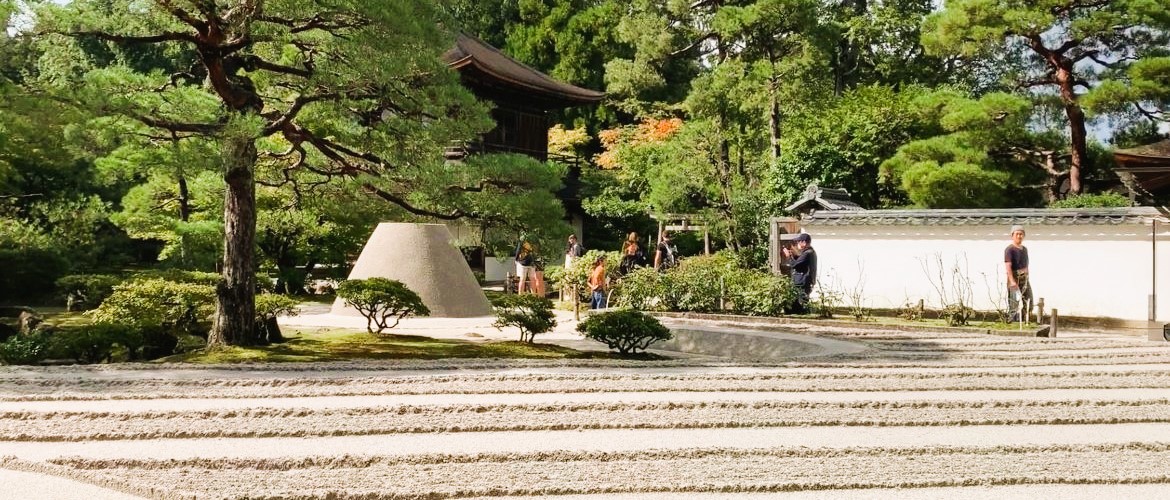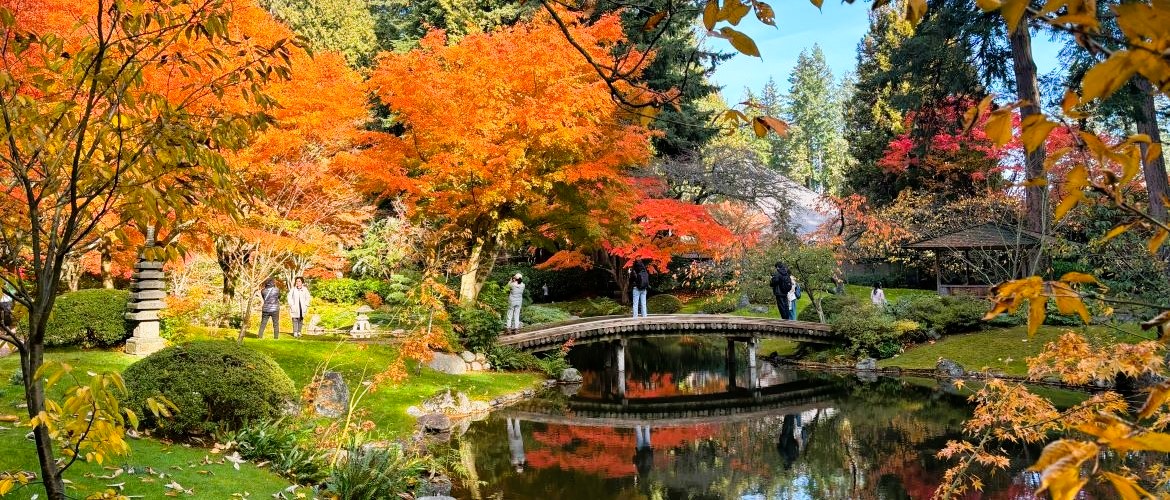Tokyo – Mt. Fuji – Hakone – Kanazawa – Takayama – Shirakawa – Kyoto – Nara – Osaka – Hiroshima – Miyajima – Okayama – Koyasan – Tokyo
|
“Japan was beautiful and the tour provides quite a variety of experiences. Everything from Mt. Fuji and the cherry blossoms, to sushi making, temples and shrines and some of the most beautiful gardens you could ever hope to see.” | Testimonials |
Tokyo – Mt. Fuji – Hakone – Kanazawa – Takayama – Shirakawa – Kyoto – Nara – Osaka – Hiroshima – Miyajima – Okayama – Koyasan – Tokyo
Embark on a journey that transcends ordinary travel and immerse yourself in the enchanting world of Japanese gardens with Laurus Travel’s Japan Garden Tour. This meticulously crafted experience is designed to captivate your senses and unveil the profound beauty that lies within Japan’s fabled gardens. From historic tea gardens to contemporary Zen spaces, indulge yourself in the serenity that defines Japan’s garden culture.
Important Features
- Small group size (20 maximum)
- Professional guides well versed in the design and history of Japanese gardens
- Top-rated gardens including Kenroku-en in Kanazawa, Koraku-en in Okayama, Ryōan-ji and Ginkaku-ji in Kyoto
- Temple stay at Koyasan (1 night)
- Quality Japanese & Western meals
- Traditional kaiseki dinner with maiko (geisha trainee) performance
- Sushi making lesson
- Farewell dinner featuring premium Japanese beef (wagyu)
Meal Code: B = breakfast / L = lunch / D = dinner
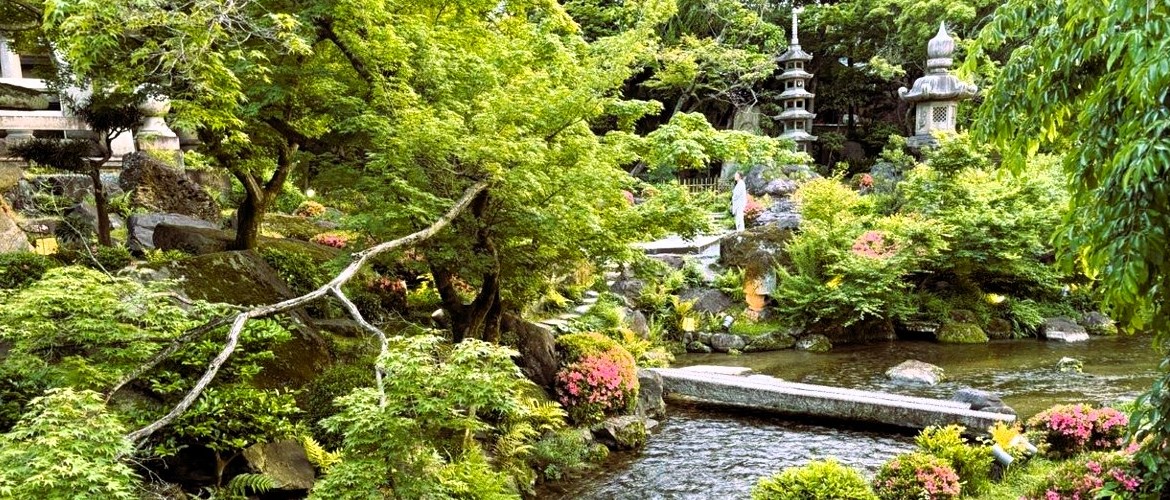
Day 1/Mon: Departing Home City
The journey begins with your transpacific flight departing from a city of your choice. You’ll lose a day upon crossing the International Date Line.
Day 2/Tue: Arrival in Tokyo
Welcome to Tokyo!
Please make your way to the hotel on your own. Detailed up-to-date information on how to get to the hotel will be provided in the final update two weeks before departure. Private transfer can be arranged on request.
Day 3/Wed: Tokyo (B/L)
Tokyo, literally meaning “eastern capital” and officially named Tokyo Metropolis, is one of the most populous mega-cities in the world with a population of 14 million. Formerly known as Edo, the city has been the de facto seat of the Japanese government since 1603 when shogun Tokugawa Ieyasu chose the city for his headquarters. The shogun (general) was a hereditary commander ceremoniously appointed by the emperor but held real power over the country during the shogunate period between 1192 and 1867. Edo was renamed Tokyo after Emperor Meiji moved his seat from Kyoto in 1868 when the last shogun was forced to return power to the imperial court. The city covers an area of 2,187 square kilometres following the merger in 1943 of the city of Tokyo and Tokyo Prefecture.
Our full-day sightseeing begins at the plaza in front of the Imperial Palace. The palace is closed to tourists but a stroll across the plaza accompanied by commentaries on the imperial family and the city of Tokyo gets the tour off to a good start.
We then proceed to Senso-ji, the oldest Buddhist temple in Tokyo dating back to 628.
After lunch, we drive through the ritzy Ginza shopping district on the way to Meiji Jingu, a Shinto shrine dedicated to Emperor Meiji (1852 -1912) and his wife.
We end the day with a visit to the observation deck atop the Tokyo Metropolitan Government Building in Shinjuku. On a clear day, the visitor could see the peak of Mount Fuji about 84 km to the west. The building complex completed in 1990 at a cost of US$1 billion consists of three main structures each taking up a city block. The architect of the Tokyo Metropolitan Government Building is Kenzo Tange (1913 – 2005), who in 1987 became the first Japanese to win the Pritzker Prize for Architecture.
Day 4/Thu: Tokyo – Mt. Fuji – Hakone – Tokyo (B/L)
We depart at 7:30 AM for a full-day excursion to Mt Fuji and Hakone.
Mt. Fuji, the highest mountain (3,776 metres) in Japan, is a two-hour drive from Tokyo. We stop by the Fujisan World Heritage Center to view the summit and learn about the history, formation and ecology of Mt. Fuji through exhibits and a short film. However, it is purely a matter of luck whether the summit is visible as Mt. Fuji is often shrouded in clouds. Our schedule does not include hiking the mountain – the trails are open between July and early September and it would take the average person at least six hours to hike to the summit even if one starts from the highest station at 2,305 metres above sea level.
We then proceed to Lake Ashi in Hakone for a short cruise across the lake. This is followed by a 10-minute cable car ride that transports us to the station overlooking the sulphur-spewing Owakudani Geothermal Valley. On a clear day, the cable car ride provides stunning views of Mt. Fuji and its surrounding mountain slopes.
We expect to arrive back at the hotel around 6:00 PM.
Day 5/Fri: Tokyo – Kanazawa (B)
Enjoy some downtime before boarding the high-speed train (Hakutaka #561, 11:24/14:17) to Kanazawa. Be sure to grab some snacks for lunch before getting on the train.
On the shores of the Sea of Japan, Kanazawa is the capital of Ishikawa Prefecture. The city has a population of 463,000 and is considered a jewel of Japanese tourism that is often overlooked by foreign tourists due to its relatively remote location. Travellers coming here are richly rewarded with the well-preserved Edo-period city, where the samurai, merchants, geisha, and daimyo (lords) all left their mark.
Due to the proximity of the attractions, our sightseeing in Kanazawa is done exclusively on foot with occasional use of taxi to cover the short distances between some of the locations. Please expect to walk 5 to 8 km per day.
After hotel check-in, we walk or go by taxi (2 km, 6 minutes) to Higashi Chaya District. This is one of the three preserved historical geisha districts in Kanazawa (along with Nishichayagai and Kazuemachi) where geisha still entertain today.
Day 6/Sat: Kanazawa (B/L)
Today’s sightseeing on foot begins at Omicho Market, Kanazawa’s largest fresh food market particularly well known for seafood.
The walk from the market to Kanazawa Castle is less than 10 minutes. The restored castle was originally built in 1580 for Maeda Toshiie, the fourth son of a minor samurai who entered the service of a powerful daimyo at the age of 15 and quickly rose through the ranks. The castle was reconstructed multiple times due to fire damages throughout its history. The last time a fire destroyed the castle was in 1881. The Hishi Yagura turret, Gojikken Nagaya warehouse and the Hashizume-mon Tsuzuki Yagura turret were faithfully restored in 2001 to their 1809 form using traditional construction methods. Today’s pillars are constructed from the Japanese Hinoki cypress along with the use of the massive American cypress as ceiling beams.
From the castle, we walk across a bridge to enter Kenroku-en, which used to be part of the castle. One of the Three Great Gardens of Japan (Koraku-en in Okayama and Kairaku-en in Mito being the other two), Kenroku-en was developed from the 1620s to the 1840s by the Maeda clan, the daimyo that ruled the former Kaga Domain.
The restaurant for lunch is a 12-minute (700 metres) downhill walk from the garden.
After lunch, we walk 550 metres (8 minutes) to Nagamachi, a historical preservation zone where the residents still go about their daily lives among the remnants of a bygone age. A highlight of the neighbourhood is the restored Nomura Samurai House, whose small but supremely exquisite traditional garden delights visitors from around the world.
Guests who are tired of walking can go back to the hotel from the samurai house by taxi (1.4 km) for about 750 yen or US$5.50.
Day 7/Sun: Kanazawa – Shirakawa – Takayama (B/D)
After breakfast, we transfer to Kanazawa Station to board the long-distance motor coach (11:08/12:25, 65 km) bound for Shirakawa. Seats and luggage storage space on the bus are guaranteed.
Situated in a picturesque river valley, Shirakawa village is part of the UNESCO World Heritage Site known as Historic Villages of Shirakawa-go and Gokayama. The village’s gassho-style large houses with steeply pitched thatched roofs are said to be the only surviving examples of their kind in Japan.
After a leisurely walking tour of the village, we continue on to Takayama by long-distance coach (15:45/16:36). Again, seats and luggage storage space on the bus are guaranteed.
The walk from the bus terminal to the hotel on flat ground takes 4 minutes (300 metres).
Day 8/Mon: Takayama – Kyoto (B)
Famous for its inns, sake breweries, food festivals and local folk art, Takayama (118 km southeast of Kanazawa) is a delightful town nestled amongst the Japanese Alps.
Our walking tour this morning takes in an open-air market, Sanmachi Historic District, and Takayama Jinya – government house of the region during the Tokugawa shogunate period. Have a pair of thick socks ready for the hour-long walking and standing on the hardwood floor inside the Jinya house.
Later in the day, we retrieve our luggage from the hotel and walk to the train station (5 minutes/240 metres) for the afternoon train to Kyoto (Hida 12, 13:35/16:09; via Nagoya, Nozomi 75, 16:26/17:00).
The transfer to the hotel on arrival, by taxi or chartered bus, takes 10 minutes (3 km).
Day 9/Tue: Kyoto (B/L/D)
Nicknamed “City of Ten Thousand Shrines”, Kyoto (literal translation: capital city) served as Japan’s capital for more than one thousand years before the imperial court moved to Tokyo in 1868 with the onset of the Meiji Restoration (1868 to 1912, a historical period associated with the emergence of Japan as a modernized nation). Kyoto is a scaled replica of the Chinese Tang Dynasty’s capital Chang’an, present-day Xi’an. The Tang Dynasty (618 – 907) was a golden era in Chinese history and a time when Japanese adoption of Chinese culture reached its peak. Kyoto today, with a population of 1.5 million, forms a major part of the Kyoto-Osaka-Kobe metropolitan area.
Our first stop this morning is Kinkaku-ji (Temple of Golden Pavilion). This is a Zen Buddhist temple and one of 17 locations comprising the Historic Monuments of Ancient Kyoto World Heritage Site.
We then proceed to the Arashiyama (Storm Mountain) area where our sightseeing takes in Tenryu-ji Temple and the Bamboo Forest. Located on the western outskirts of Kyoto, Arashiyama is famous for its immense natural beauty as well as its historical and cultural prominence due to the large number of well-preserved ancient Buddhist temples.
After lunch, we tour the magnificent Nijo Castle. Construction of the castle began in 1601 under the order of Tokugawa Ieyasu, founder of the Tokugawa shogunate, but was not completed until 1626 during the reign of Iemitsu, the third Tokugawa shogun and grandson of Ieyasu. The Tokugawa shogunate was headquartered in Edo, present-day Tokyo, and Nijo Castle was the shogun’s residence in Kyoto where the imperial court was located. Nijo Castle is also the site that witnessed the ending of the Tokugawa shogunate. In late 1867, the last shogun, Yoshinobu, announced in the castle his decision to return his power back to the emperor. This was a watershed moment that helped usher in the Meiji Restoration, which, in turn, led to Japan’s industrialization and fundamentally transformed the Japanese society.
We then go back to the hotel for a quick break before heading out for dinner, a traditional kaiseki banquet accompanied by the private performance of a dancing geisha known as maiko in Japanese.
Day 10/Wed: Kyoto (B)
After breakfast, we explore Ginkaku-ji (Silver Pavilion Temple) and Ryoan-ji, two temples famous for their exquisite gardens. The latter is particularly known for its karesansui or dry landscape garden.
The afternoon is set aside for you to explore on your own. Our recommendations include Fushimi Inari Shrine (good for hiking), Kyoto National Museum, Kyoto Imperial Palace (subject to frequent closure), and Gion – the famous geisha entertainment district.
Day 11/Thu: Kyoto – Nara – Osaka – Hiroshima (B/L)
We depart for Nara at 07:45. The 45 km drive to the magnificent Todai-ji temple takes about an hour. This ancient Buddhist temple is well-known not only for its splendid architecture and the huge bronze statue of the Buddha in the main hall but also for the 1,200 wild deer roaming freely on the grounds of the temple.
Nara is the capital city of Nara Prefecture and a former capital of Japan (710 – 794). With a population of roughly 370,000 and an area of 280 square kilometres, the city occupies the northern part of Nara Prefecture. Eight temples, shrines and ruins together with Kasugayama Primeval Forest collectively form “The Historic Monuments of Ancient Nara” – a UNESCO World Heritage Site.
Afterwards we continue on to Osaka, where we visit the historic Osaka Castle and Osaka’s legendary shopping and entertainment district known as Dotonbori. Situated at the mouth of the Yodo River on Osaka Bay, Osaka is Japan’s third most populous city (after Tokyo and Yokohama) and plays a significant role in Japanese economy. Osaka was once known as the “nation’s kitchen” because of its function as Japan’s rice trading centre during the Edo period.
We then transfer to the Shin Osaka Station for the late afternoon rail journey to Hiroshima (Sakura 563, 16:23/17:51).
Day 12/Fri: Hiroshima – Miyajima – Hiroshima (B/D)
Hiroshima, literally meaning ‘broad island’, is the capital of Hiroshima Prefecture and the largest city in the Chugoku region with a population of 1.2 million. Hiroshima is best known as the first city in history to be targeted by a nuclear weapon when the United States Army Air Forces dropped an atomic bomb on the city (and later on Nagasaki) at 8:15 a.m. on August 6, 1945, near the end of World War II. The highlight in Hiroshima, understandably but sadly, is the Peace Memorial Park which includes the Peace Memorial Museum, and the Atomic Bomb Dome that once served as the industrial promotion hall of the local prefect.
After a tour of the Peace Memorial Park complex including two hours in the museum onsite, we proceed to Miyajima Island by a combination of taxi, commuter train and ferry.
Officially known as Itsukushima, Miyajima is a small island (30 square kilometres, population 1,760) in Hiroshima Bay known for its forests and ancient temples. The seaside Itsukushima Shinto Shrine on the island is a UNESCO World Heritage Site and the “floating” torii gate in front of the shrine is the main reason for most visitors to come here.
Day 13/Sat: Hiroshima – Okayama – Koyasan (B/D)
Travel to Okayama this morning by bullet train (Nozomi 14, 09:43/10:19) and tour Koraku-en on arrival.
One of the “Three Great Gardens of Japan”, Koraku-en traces its origin to the late 17th Century. The garden was severely damaged by flooding in 1934 and by aerial bombing during World War II but has been restored to its original look based on historical records and Edo-period paintings.
Afterwards, we continue on to Koyasan (Mount Kōya) by a combination of train and private vehicle.
Koyasan, also spelled as Koya-san, is a large temple settlement in Wakayama Prefecture, to the south of Osaka. Set in the dense forests of the Kii Mountains overlooking the Pacific Ocean, Koyasan is a key stop on the pilgrimage routes connected to the ancient capital cities of Nara and Kyoto. The influential Buddhist sect known as Shingon is headquartered at Koyasan’s Kongobu-ji Temple.
Please note that the supper provided by the Buddhist temple where we stay for the night is vegetarian and light; it is recommended that you buy some snacks at a convenience store before or after check-in, just in case.
Day 14/Sun: Koyasan – Tokyo (B/D)
Our morning schedule includes a meditation session with resident monks and visit to one or two other Buddhist temples within walking distance.
We drive to Osaka (95 km, 2 1/2 hours) around noon to board the bullet train for Tokyo (Nozomi 228, 15:00/17:27).
Enjoy a delicious dinner featuring premium Japanese beef.
Day 15/Mon: Tokyo (B)
Free day to explore on your own.
We highly recommend Ginza and Akihabara shopping districts, which even non-shoppers would find exciting. Also recommended are the top-rated Tokyo National Museum and The National Museum of Western Art – both located at Ueno Park, one of Tokyo’s most popular locations for cherry blossom every spring.
Day 16/Tue: Tokyo – Return Home (B)
The tour ends this morning. The Airport Limousine Bus is highly recommended for your transfer to the airport. The shuttle bus costs 3,600 yen (US$25) to Narita airport and 1,500 yen (US$11.50) to Haneda airport. Private transfer can also be arranged on request.
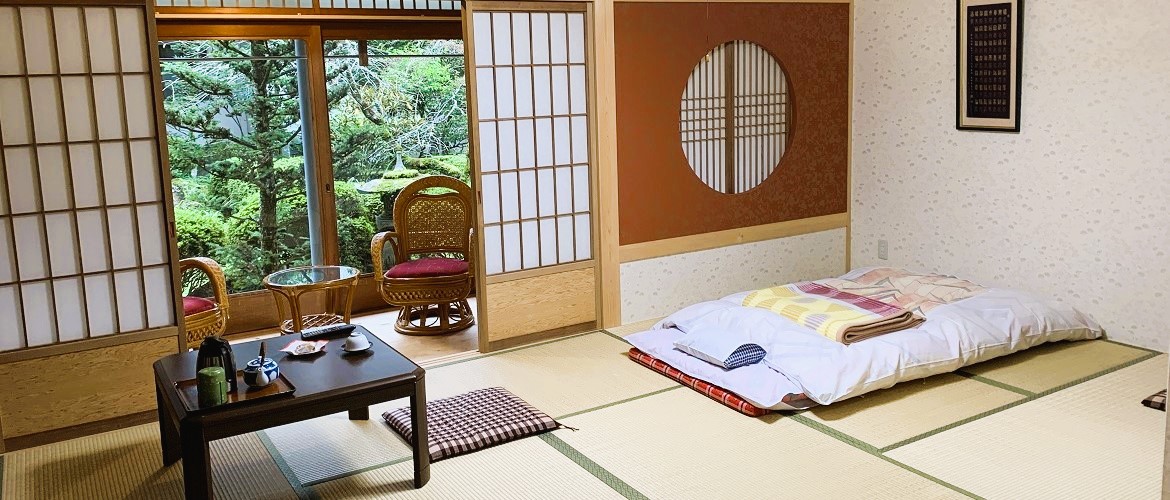
Hotel List
Hotels are subject to change. Any substitution made would be of equal or higher category in similar location.
| City | Nights | Hotel | Category |
| Tokyo – first stay | 3 | Tokyo Dome Hotel | Premium / 4 stars |
| Kanazawa | 2 | ANA Crowne Plaza Kanazawa | Premium / 4 stars |
| Takayama | 1 | Tokyu Stay Hida-Takayama | Premium / 4 stars |
| Kyoto | 3 | Hilton Garden Inn Kyoto | Premium / 4 stars |
| Hiroshima | 2 | ANA Crowne Plaza Hiroshima | Premium / 4 stars |
| Koyasan | 1 | Kongo Sanmaiin or similar | Buddhist temple |
| Tokyo – second stay | 2 | Tokyo Dome Hotel | Premium / 4 stars |
Hotels are subject to change without notice.
|
Dates and Prices
| Depart (Mon) |
Return (Tue) |
Land Only* CA$/US$ |
Single Supplement CA$/US$ |
| 2024 | |||
| 14-Oct | 29-Oct | $11,678/$8,650 | $3,713/$2,750 |
| 28-Oct | 12-Nov | $11,948/$8,850 | $3,713/$2,750 |
| 18-Nov |
02-Dec | $11,948/$8,850 | $3,848/$2,850 |
| 25-Nov |
09-Dec | $11,948/$8,850 | $3,848/$2,850 |
| Contact us for 2025 dates & prices. |
|||
* Prices are per person based on double occupancy. Land Only price does not include international air. Contact us for a fare quote.
|
Tour price includes:
|
Tour price does NOT include:
Budget a few hundred dollars for tips, incidentals and meals not included in the tour price. See Terms & Conditions for more information. |
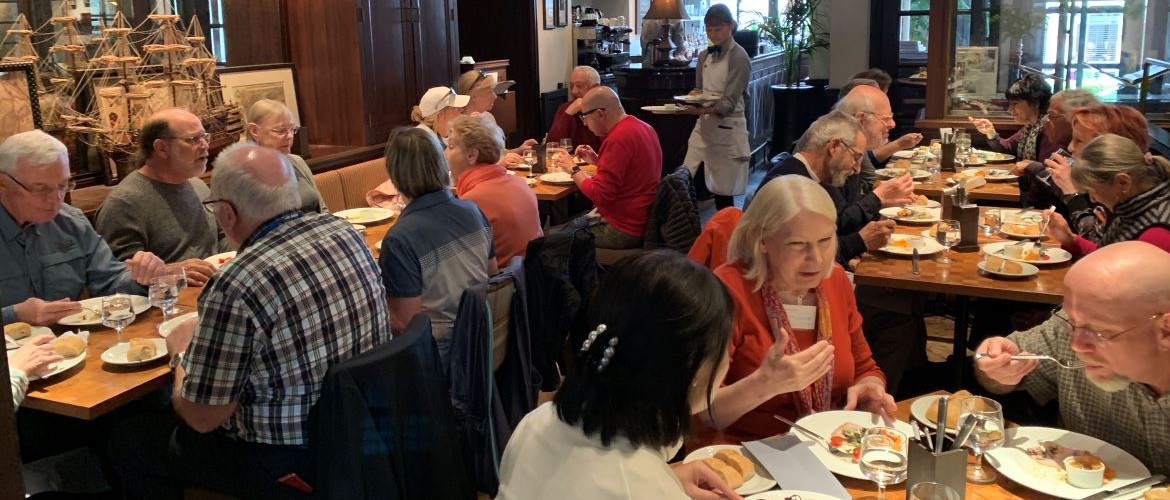
Japan Garden Tour – What You Need to Know
Passport & Visa
Your passport needs to have at least one blank visa page and six months validity at the end of the tour.
If you are a tourist from Canada, the United States, the United Kingdom, Australia and New Zealand, you do not need a visa to enter Japan as long as your stay is within 90 days.
Vaccination
No vaccination is required. We recommend vaccination against hepatitis A and suggest that you check the websites of Health Canada and/or the US CDC for up-to-date advice in this regard.
Travel Health
Japan is a very clean country, where tap water is potable. Some may prefer to boil tap water to get rid of the possible smell of chlorine. Always carry a roll of toilet paper and a bottle of hand sanitizer. In general, public toilets in Japan do not provide paper towels for hand drying; many of them have no electric hand dryers either. You should carry a small towel as many Japanese do when going out. Footwear is often forbidden when you go indoors at temples, historical sites and traditional restaurants; please bring proper socks to keep your feet comfortable.
Local Currency & Credit Card
Japan: yen (JPY)
Withdrawing cash from local ATMs after arrival remains our recommended method of currency exchange. Keep your inventory of local currency low. Your tour fare already covers all the expensive items. You only need some cash for incidentals and meals not included in the tour price. Credit cards are widely accepted across Japan. For transactions over $50, you are advised to use a credit card.
Travel Insurance – When to Buy
Your deposit will be kept as credit if you cancel for any reason. The transferrable credit has no expiration date. Therefore, it may be unnecessary to spend $30 to $50 on cancellation insurance just to protect the deposit.
However, purchase of trip cancellation & emergency medical insurance is strongly advised when your balance is due. If you don’t have proper coverage, the loss can be devastating in case of cancellation before or after commencement of the booked trip or in case of a serious medical emergency during the trip. Please ask us for premium quotes when your balance due date is near.
Cellular Data
Guests participating in this tour must have reliable cellular data available at all time in case of emergencies. You can use data roaming provided by your current phone company, or better yet sign up with a reliable eSIM service provider such as Ubigi (more on this after your tour is booked).
Meal Budget
You’ll be able to have a simple but quality lunch or dinner in a Japanese restaurant for US$20 or less. Your guide will be glad to make restaurant recommendations based on your preference and budget.
Travel Light
Guests going on this tour must agree to travel light as luggage handling is not provided. Some transfers are done by taxis and public buses, which have limited space for luggage.
You can comfortably survive 2 to 3 weeks in Japan with just a carry-on suitcase and a backpack. Lack of experience is the main reason for over-packing. If you understand the concept of layering up, you would see no need to stuff your suitcase with so much clothing.


